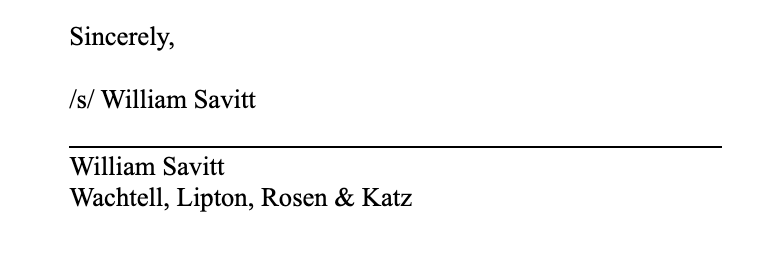Signature (and Other Handwritten Information) Detection and Recognition
Signature detection helps determine whether a document has been signed. A related feature identifies whether pages have any handwritten information on them. Recognition refers to actually converting that handwritten information to text (i.e., analogous to OCR on printed text).
Signature detection is useful because:
- Often there can be many draft versions of an agreement floating around, and the signed version will be the one that matters. (Unless it’s been amended, in which case the amended agreement will matter too.) If doing post-signature contracts work—like contract analysis or contract management, users will care (most, or maybe exclusively) about the executed agreement.
- In multiple post-signature areas (contract analysis, CLM, VDRs, lease management), users can really care whether agreements are fully executed. Sometimes parties think documents are fully signed but they aren’t (or they are fully signed but no-one can find the fully signed agreement). Signature detection can guide end users to higher priority spots - e.g., agreements that are not executed.
Detecting other written information in documents can be useful too:
- Sometimes, important information is hand filled in. Dates, amounts, party names. These variables can be key commercial terms, and so need to be identified.
- Handwriting occasionally strikes out or modifies agreement terms. Identifying these spots is useful immediately pre-signature, as well as post-signature.
- In some jurisdictions, law or custom may require that parties initial every page. Identifying markings can help post-signature reviewers determine whether this has been done.
Note that Contracts AI signature detection and detection of other written information is likely to have important limitations:
- It is unlikely to be able to tell whether a given signature actually matches that of the real signature of the signer. This should be no surprise - many (all?) banks can’t even tell this.
- Plus, standardized “handwritten” signatures from eSignature systems (DocuSign, Adobe Sign, Hello Sign, PandaDoc, whatever) mean that many documents signed today are not actually signed with a person’s standard handwritten signature.
- The Contracts AI system may not be able to read handwritten information - it may only identify that there is handwritten information in a specific place. So, though you might like to know that an agreement is dated “Oct 29, 2019” (and then normalize this), the AI may only take you to the place where this handwritten date has been filled in. This is where recognition comes in but even that can be fragile due to the wide variation in human handwriting.
One particularity of legal documents is that sometimes (especially in filed agreements (e.g., on EDGAR)), signatures are sometimes represented as “/s/ [name]”. A good Contracts AI signature detection feature should also identify this signature format.

Example of a signature represented as “/s/ [name]”
Image Source: Edgar Archives
If evaluating Embeddable Contracts AIs for signature detection and detection of other handwritten information in contracts, you should consider whether the Embeddable Contracts AI you’re considering is accurate at finding the information you need it to.